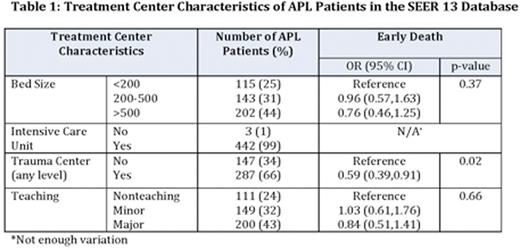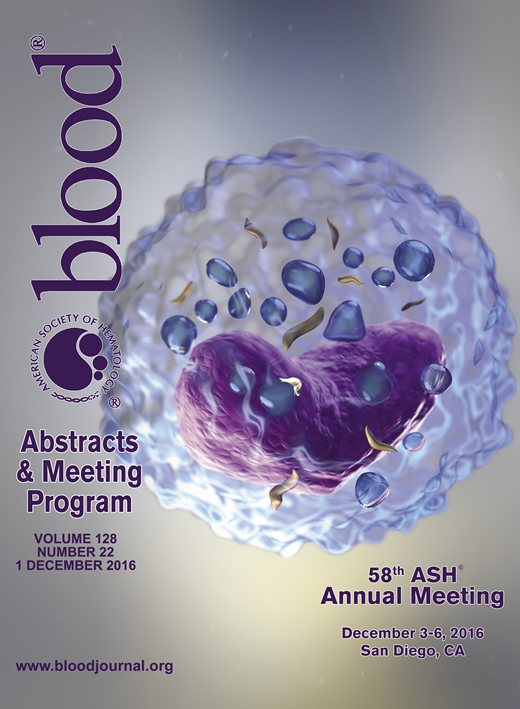Abstract
Background: Acute promyelocytic leukemia (APL) is a unique subtype of AML with a high cure rate of 80-90% when treated with all-trans retinoic acid (ATRA)-based therapy. However, early death at presentation or during induction therapy due to hemorrhage remains the major cause for treatment failure. Using the Surveillance, Epidemiology, and End Results (SEER) data, we have previously reported an early death rate of 17.3% (Park J et al. Blood 2011;118:1248). We hypothesized that the early death may be associated with the expertise and availability of blood products at treatment centers and undertook a retrospective cohort study.
Methods: APL patients diagnosed between 1992 and 2009 were identified using SEER 13 data. Patients with available survival and treatment center information were eligible for the study. Early death was defined as death within one month of diagnosis. The treatment center information was obtained from the American Hospital Association database and included the following characteristics: number of hospital beds (<200, 200-500, >500), presence of intensive care unit (ICU), presence of trauma center (as a surrogate indicator for availability of on-site blood products), and the teaching status (nonteaching, minor, major). Logistic regression was used to compare early death by selected hospital characteristics.
Results: The full-set of pre-specified treatment center information were available from five SEER 13 cancer registries (Iowa, Utah, Detroit, Connecticut, Hawaii); from these registries, we identified 507 eligible patients ofwhom [154 patients (30%)] experienced an early death. Data on bed size, teaching status, ICU presence and trauma center were available in 460, 460, 445 and 434 patients, respectively. Most APL patients were treated at centers with ³200 hospital beds (n=345), dedicated ICU (n=442), trauma center (n=287) and at teaching hospitals (n=349) (see Table 1). Of the treatment center characteristics, analysis revealed that the presence of trauma center was statistically significantly associated with decreased odds of early death (odds ratio: 0.59, 95% CI: 0.39-0.91; p=0.02).
Conclusions: Early death remains as the major cause of treatment failure in APL. To the best of our knowledge, this is the first and largest study reporting an association of treatment center characteristics with survival in APL, and suggests a prompt referral of APL patients to a large treatment center may further improve the outcome of these patients.
Park:Novartis: Consultancy; Baxalta: Consultancy; Juno Therapeutics: Research Funding; Amgen: Consultancy. Douer:Pfizer: Consultancy; Shire: Consultancy, Speakers Bureau; Spectrum: Consultancy; Jazz Pharmaceuticals: Honoraria; Gilled Sciences, Inc: Consultancy.
Author notes
Asterisk with author names denotes non-ASH members.


